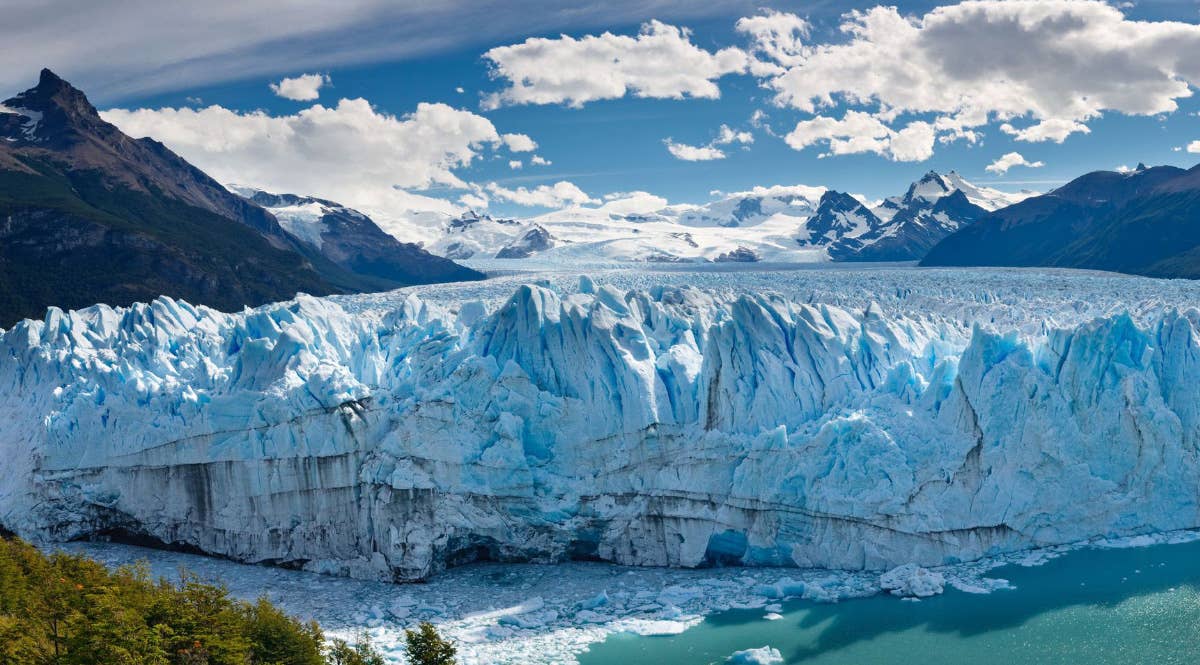Researchers discover what triggered Earth’s last ice age
What was the origin of the ice sheets that defined the final ice age, and how could they expand so rapidly?

[Apr. 30, 2023: JJ Shavit, The Brighter Side of News]
At the beginning of the last ice, local mountain glaciers grew and formed large ice sheets, like the one seen here. (CREDIT: Creative Commons)
For quite some time, paleo-climate specialists have been perplexed by two enigmas: What was the origin of the ice sheets that defined the final ice age, and how could they expand so rapidly?
A fresh research conducted by the University of Arizona's experts suggests a plausible explanation for the swift expansion of the ice sheets that coated a considerable portion of the Northern Hemisphere during the last ice age. Furthermore, the study's findings may be applicable to other glacial periods in the Earth's past.
A recent publication in the journal Nature Geoscience provides new insights into the mechanisms behind Earth's glacial-interglacial cycles. Understanding the periodic advance and retreat of ice sheets in the Northern Hemisphere is a complex phenomenon that researchers have been working on for a long time.
According to the study, there is now a proposal for the quick expansion of ice sheets that covered a significant portion of the Northern Hemisphere during the most recent ice age. The research results may be applicable to other glacial periods in Earth's history.
Related Stories
Around 100,000 years ago, mammoths roamed the Earth during a time when the Northern Hemisphere climate underwent a significant drop in temperature, resulting in the formation of massive ice sheets. Local mountain glaciers gradually grew and expanded over approximately 10,000 years, eventually covering a substantial portion of present-day Canada, Siberia, and northern Europe.
Although it is widely acknowledged that the Earth's orbit around the sun oscillated periodically, leading to cooling in the Northern Hemisphere summer and ultimately causing widespread glaciation, scientists have found it difficult to explain the existence of extensive ice sheets in regions like Scandinavia and northern Europe, where temperatures are typically milder.
According to researchers, while the Canadian Arctic Archipelago experiences frequent ice formation due to its cold climate, Scandinavia is expected to remain largely ice-free. This is attributed to the presence of the North Atlantic Current, which brings warm water to the coasts of northwestern Europe. Although both regions are located on similar latitudes, the temperatures in Scandinavia during summer are well above freezing, whereas large parts of the Canadian Arctic remain below freezing throughout summer.
During this time, the earth’s climate repeatedly changed between very cold periods, during which glaciers covered large parts of the world, and very warm periods during which many of the glaciers melted. (CREDIT: CDM.org)
Marcus Lofverstrom, the lead author of the study and an assistant professor of geosciences and head of the UArizona Earth System Dynamics Lab, stated that the origin and cause of the ice sheets in Scandinavia remain unknown. He pointed out that the rapid expansion of the ice sheets within a short period is a mystery that needs to be explored further.
Lofverstrom and his team developed an intricate Earth-system model called the Community Earth System Model to uncover solutions. By using this model, they were able to accurately replicate the conditions that existed at the start of the most recent glacial period. Lofverstrom extended the ice-sheet model domain from Greenland to cover a large part of the Northern Hemisphere in high spatial detail.
The researchers utilized the improved model configuration to determine the crucial factor controlling the North Atlantic climate and the growth of ice sheets in Scandinavia. They discovered that the ocean gateways in the Canadian Arctic Archipelago served as a vital linchpin, determining whether ice sheets could form or not.
The simulations indicated that as long as the ocean gateways in the Canadian Arctic Archipelago were open, the Northern Hemisphere's cooling due to Earth's orbital configuration allowed ice sheets to develop in Northern Canada and Siberia, but not in Scandinavia.
The scientists conducted a second study where they created a simulation to investigate the impact of marine ice sheets blocking the waterways in the Canadian Arctic Archipelago. The diversion caused the North Atlantic deep circulation to weaken and freshen, leading to the expansion of sea ice and cooler conditions in Scandinavia. The simulation results indicated that this scenario was adequate to initiate the growth of ice in Scandinavia.
Canadian Arctic Archipelago consists of 94 major islands and 36,469 minor islands north of mainland Canada. (CREDIT: World Atlas)
Furthermore, the researchers examined marine sediment records from the North Atlantic, which provided evidence of glaciers in northern Canada several millennia before those in Europe. The sediment records also demonstrated strong indications of a weakened deep ocean circulation before the formation of glaciers in Scandinavia, which closely mirrored the results obtained from the simulation.
The discovery made in the study holds great significance in comprehending previous climatic changes and has the potential to enhance climate models. The researchers stressed that the mechanisms they identified could be applicable to all ice ages, not just the most recent one.
Lofverstrom expressed excitement about the possibility that their findings could clarify shorter cold periods such as the Younger Dryas cold reversal that interrupted the general warming at the end of the last ice age.
Furthermore, the research could have implications for predicting future climate change. The study proposes that even minor disturbances in the Earth's climate system could result in substantial and abrupt changes in ice sheet size and distribution, with far-reaching effects on sea level increase, ocean currents, and global climate patterns.
Thompson commented that the study highlights the significance of exploring Earth's past climate to enlighten our understanding of present and future climate change. The study showcases how small changes in the Earth's system can produce significant and unforeseen outcomes, a crucial finding in this era of rapid climate change.
The research team emphasized that the study is an excellent example of the benefits of interdisciplinary collaboration. Experts from multiple fields, including geosciences, oceanography, and climate modeling, were involved in the project. The investigation relied on advanced computational resources to simulate the complex interactions between Earth's atmosphere, oceans, and ice sheets.
According to Marcus Lofverstrom, the lead author of the study, the collaboration of scientists from diverse disciplines and the use of state-of-the-art modeling techniques enabled a major breakthrough in understanding Earth's climate history. Lofverstrom hopes that the study's findings will inspire further research and bring new insights into the complex processes that drive Earth's climate system.
The study's results have been met with excitement from other researchers in the field. Professor Anders Levermann, a dynamics of the climate system expert at the Potsdam Institute for Climate Impact Research in Germany, who was not involved in the study, described it as an exciting and significant piece of research that sheds new light on one of the major mysteries of Earth's climate history. The study provides compelling evidence for the role of marine ice in triggering glaciation in Scandinavia, and it has important implications for our understanding of past and future climate change.
Lofverstrom plans to continue investigating the complex interactions between Earth's climate system and ice sheets in future research. He acknowledges that there is still much to learn about the processes that drive Earth's glacial-interglacial cycles, and hopes that his team's findings will inspire others to explore these fascinating questions and help us better understand the complex and dynamic nature of our planet's climate system.
The study represents a significant milestone in the field of paleo-climatology, providing new insights into one of the most important events in Earth's recent history. As the world continues to tackle the urgent challenge of climate change, the study's findings highlight the need to comprehend the complex interactions between Earth's climate system and ice sheets. They also demonstrate the potential for minor disturbances to have significant and rapid impacts on global climate patterns.
The outcomes of the research have implications for the ongoing discussions about climate change and the extent to which human actions contribute to the phenomenon of global warming. Although the study's primary focus was on analyzing past climate fluctuations, it offers valuable comprehension into the intricate dynamics that shape Earth's climate and its components such as atmospheric circulation, oceans, and ice sheets.
For more environmental good news stories check out our Green Impact section at The Brighter Side of News.
Note: Materials provided above by The Brighter Side of News. Content may be edited for style and length.
Like these kind of feel good stories? Get the Brighter Side of News' newsletter.



